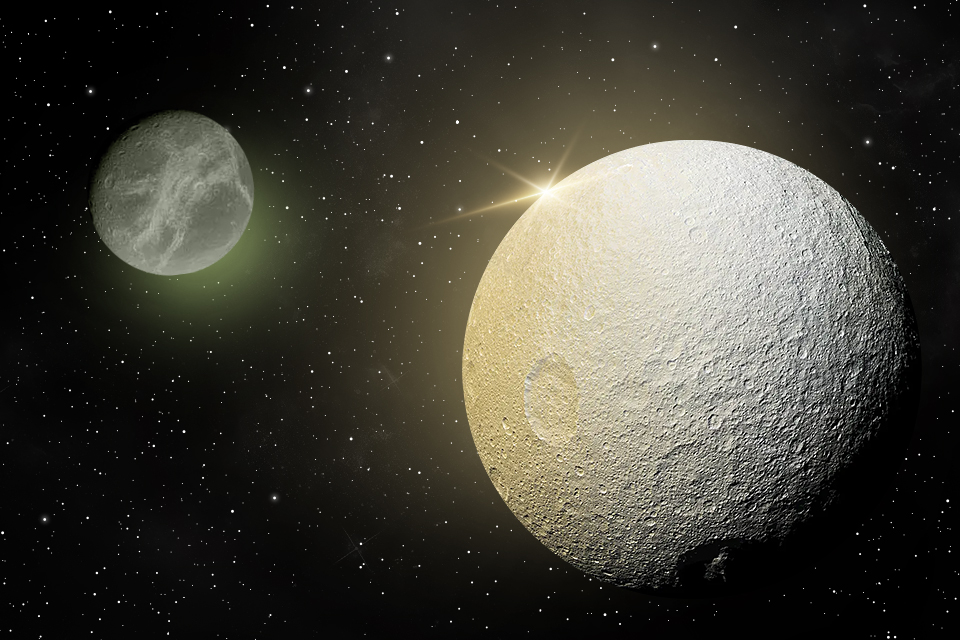On March 21, 1684, 340 years ago, Italian astronomer Giovanni Cassini discovered two moons near Saturn. Subsequently, they were named Tethys and Dion. Here are the basic facts about these interesting celestial bodies.

1. How did the names of the satellites appear?
When Cassini discovered Saturn‘s two moons, they didn’t have their own names. For more than 150 years, they remained as Saturn III and Saturn IV. And only in 1847, the English astronomer John Herschel proposed naming Saturn’s moons after the Titans, the mythological brothers and sisters of Kronos.
In ancient mythology, Tethys is the wife of the titan of the Ocean, the female embodiment of the sea. According to legend, she gave birth to three thousand daughters of Oceanus and the same number of sons. Dion is also Titanides or Titanesses and, at the same time, the goddess of rain.
2. What is the size of Tethys and Dion and how far from Saturn are they?
Tethys and Dion have a spherical shape, that is, when they were formed, their own gravity was strong enough to recall all the big irregularities. But in general, these are relatively small objects.
Tethys has a diameter of 1060 km. That is, it is about three times smaller than the Moon. The major semi-axis of its orbit is 294.7 thousand km, and it makes one orbit around Saturn in 1.89 Earth days. Dion is slightly larger — 1123 km. The semi-major axis of its orbit is 377 thousand km, and one orbit around the gas giant takes 2.77 days.
3. What are Saturn’s moons composed of?
Tethys has a density of 0.984 g/cm3, which indicates that it mainly consists of water ice. It is still unknown whether it has ever undergone gravitational differentiation. But if it has a rock core, it is very small, no more than 145 km in diameter. There are only a few dark areas on the surface, which most likely consist of iron-containing minerals.
Dion has a much higher density — 1,4757 g/cm3. Based on it, although this moon consists mainly of water ice, it contains a fairly large proportion of silicate inclusions. There is a theory that an ocean may be hiding under the surface.
4. What are “Trojan Moons”?
Both Tethys and Dion have Trojan moons. This is the name given to objects orbiting Saturn in the same orbit as a larger celestial body and located at its “Trojan points” — places in front of the direction of movement and behind it. Here, all the gravitational effects of other bodies on them are compensated.
For Tethys, such “Trojan moons” are Telesto and Calypso. The first of them has an irregular shape and dimensions of 33.2 x 23.4 x 19.2 km, the second is 29.4×18.6×12.8 km.
5. What is interesting about the Odysseus crater?
The most interesting detail of the relief, which is on both moons, is the Odysseus crater on Tethys. It has a diameter of about 450 km and is one of the largest such structures in the Solar System. If it were on the Earth, then several regions of Ukraine could fit inside. The crater shaft rises above the surface to a height of 5 km.
Odysseus is an extremely flat crater for its size. Its bottom lies “only” 3 km below the surrounding surface, which is quite a bit for an object of this size. Scientists explain this by the plasticity of the Tethys crust, which eventually partially returned to its original shape.
Follow us on Twitter to get the most interesting space news in time
https://twitter.comne/ust_magazine


